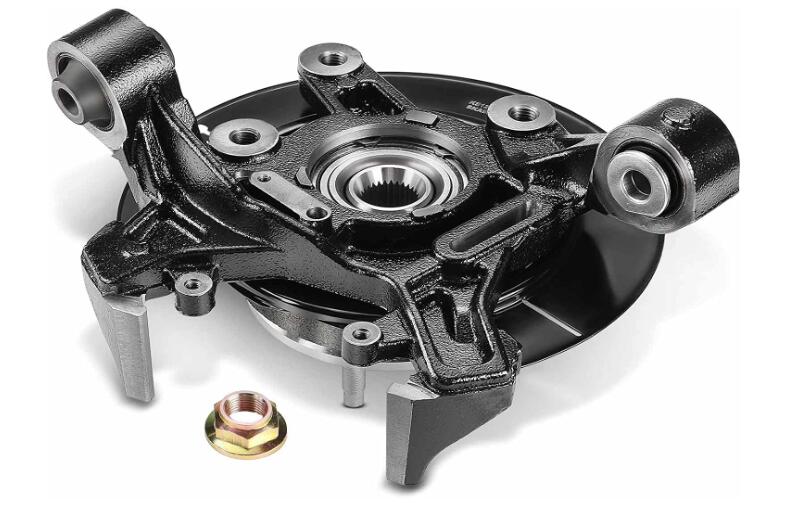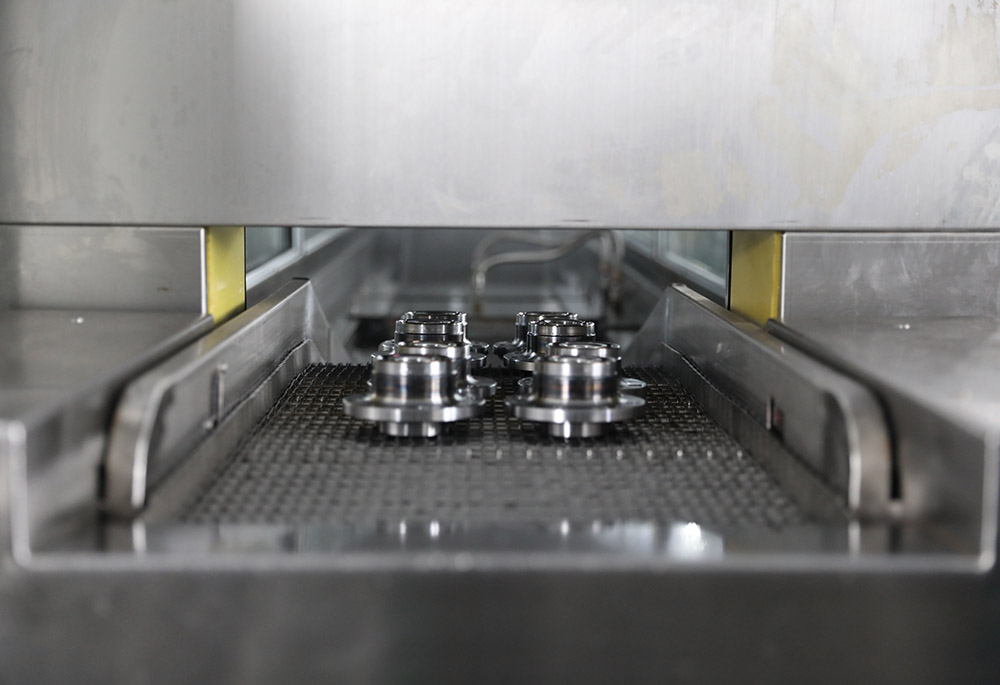Introduction
Wheel bearings are essential components of a vehicle’s wheel assembly, enabling smooth, frictionless rotation of the wheels and supporting the vehicle’s weight.
This article, brought to you by Wana Auto Parts Co., Ltd., delves into the science behind wheel bearings, exploring how they function, their various types, and the importance of proper maintenance to ensure optimal performance and longevity.
As an experienced wheel bearing and hub assembler manufacturer, Wana Auto Parts Co., Ltd. offers valuable insights to help vehicle owners and automotive professionals better understand these critical components.
The Role of Wheel Bearings
Wheel bearings serve two primary functions within a vehicle’s wheel assembly:
- Reducing Friction: Wheel bearings minimize friction between the rotating wheel hub and stationary axle, allowing the wheels to spin freely and smoothly. Wheel bearings help improve fuel efficiency, reduce wear on other components, and enhance overall vehicle performance by reducing friction.
- Supporting the Vehicle’s Weight: Wheel bearings distribute the vehicle’s weight across the axle, ensuring the wheels can safely and effectively support the vehicle while in motion. This is particularly important when cornering, accelerating, or braking, as these actions exert additional forces on the wheel assembly.
Types of Wheel Bearings
Several types of wheel bearings are used in modern vehicles, each with a unique design and characteristics. Some of the most common types include:
- Ball Bearings: Ball bearings are the most widely used wheel bearing type. They consist of spherical balls in a cage sandwiched between two circular races. The balls help distribute the load evenly and reduce friction, making ball bearings suitable for high-speed applications.
- Tapered Roller Bearings: Tapered roller bearings feature a series of tapered rollers held within a cage, positioned between an inner and outer race. The tapered design allows the bearings to withstand radial and axial loads, making them well-suited for heavy-duty vehicles and applications with significant cornering forces.
- Double-Row Angular Contact Ball Bearings: These bearings consist of two rows of ball bearings arranged at an angle to each other. Double-row angular contact ball bearings support combined radial and axial loads, providing enhanced rigidity and load-carrying capacity compared to single-row bearings.
- Wheel Hub Units: Wheel hub units, or hub assemblies, combine the wheel bearing and hub into a single pre-assembled component. This integrated design simplifies installation, reduces maintenance requirements, and improves overall wheel assembly performance.
How Wheel Bearings Work
At a fundamental level, wheel bearings provide a low-friction, rolling contact surface between the wheel hub and the axle.
The bearings consist of an inner and outer race, with rolling elements (balls or rollers) between them.
The rolling elements are designed to roll smoothly along the races, transferring the load from the wheel hub to the axle and vice versa.
The wheel hub rotates around the axle when a vehicle is in motion.
The wheel bearing’s rolling elements allow the hub to spin smoothly, with minimal friction, while transferring the vehicle’s weight and any additional forces exerted on the wheel assembly.
This enables the wheels to maintain consistent contact with the road surface, providing a stable and comfortable ride.
The specific design and arrangement of the rolling elements within the bearing determine its ability to withstand different loads.
For example, ball bearings are designed to handle primarily radial loads (perpendicular to the axle).
In contrast, tapered roller bearings can support both radial and axial loads (parallel to the axle).
Additionally, some wheel bearings are sealed or pre-lubricated to reduce maintenance requirements and prolong service life.
Sealed bearings are designed with a built-in seal that keeps contaminants out and lubricant in, ensuring optimal performance and durability.
The Importance of Wheel Bearing Maintenance
Proper maintenance of wheel bearings is crucial for ensuring optimal performance, safety, and longevity of your vehicle.
Neglected or damaged wheel bearings can lead to various issues, including increased friction, uneven tire wear, decreased fuel efficiency, and compromised handling.
In extreme cases, a failed wheel bearing can cause a wheel to detach from the vehicle, posing a significant safety risk.
Some key aspects of wheel bearing maintenance include:
- Regular Inspections: Conduct periodic visual inspections of your wheel bearings for signs of wear, damage, or corrosion. Listen for unusual noises, such as grinding or humming, which may indicate a bearing issue.
- Lubrication: Proper lubrication reduces friction and wears within the wheel bearing. Follow your vehicle manufacturer’s recommendations for lubricant type and replacement intervals. Some wheel bearings are pre-lubricated and sealed, requiring little to no maintenance.
- Proper Installation: When installing new wheel bearings or servicing existing ones, ensure they are properly seated and torqued to the manufacturer’s specifications. Incorrect installation can lead to premature wear or failure of the bearing.
- Timely Replacement: Replace worn or damaged wheel bearings promptly to avoid further damage to the wheel assembly and surrounding components. Consult your vehicle owner’s manual or a qualified technician for guidance on replacement intervals and procedures.
Signs of Wheel Bearing Failure
Detecting the early signs of wheel bearing failure can help prevent more severe issues and costly repairs. Some common indicators of a failing wheel bearing include:
- Unusual Noises: Grinding, humming, or growling noises from the wheel area may suggest a bearing issue, especially if the noise intensifies when cornering or changes with vehicle speed.
- Vibration or Wobbling: Excessive vibration or wobbling of the wheel while driving may indicate a worn or damaged bearing, causing the wheel to move irregularly on the axle.
- Uneven Tire Wear: Abnormal or uneven tire wear can be a sign of a misaligned or failing wheel bearing, as the bearing’s inability to support the wheel properly can result in uneven contact with the road surface.
- Steering Wander: A failing wheel bearing can cause the steering to feel loose or wander, making it difficult to maintain a straight path while driving.
If you suspect a wheel bearing issue, consult a qualified technician to diagnose and address the problem.
Partnering with a Reliable Manufacturer: Wana Auto Parts Co., Ltd.
Choosing the right wheel bearing and hub assembly manufacturer is crucial for ensuring the quality, performance, and reliability of these components in your vehicle.
Wana Auto Parts Co., Ltd., a China-based company with over a decade of experience in the industry, is a leading provider of high-quality wheel bearing and hub assemblies.
Wana Auto Parts Co., Ltd. offers a comprehensive range of wheel bearing and hub assembly products, with more than 1,000 models available and 20 new models developed each month.
The company’s commitment to quality is evident in its 2-year or 80,000 km warranty, demonstrating confidence in its products’ durability and performance.
In addition to its extensive product range, Wana Auto Parts Co., Ltd. stands out for its end-to-end manufacturing capabilities, handling everything from raw materials to finished products.
This allows for superior cost, delivery, and quality control compared to competitors. Wana Auto Parts Co., Ltd. has a proven track record of working with well-known brands, including SKF, an industry leader, further solidifying its reputation as a trusted manufacturer in the wheel bearing and hub assembly market.
Conclusion
Understanding the science behind wheel bearings and their critical role in vehicle assembly is essential for optimal performance and safety.
By learning how wheel bearings work, their various types, and the importance of proper maintenance, vehicle owners and automotive professionals can ensure a smooth, efficient, and reliable driving experience.
Partnering with a reliable manufacturer, like Wana Auto Parts Co., Ltd., for your wheel bearing and hub assembly needs ensures you receive quality products and support for your vehicle.
Regular inspections, timely replacement, and adherence to manufacturer guidelines are vital to keeping your wheel bearings in top condition and your vehicle operating at its best.




